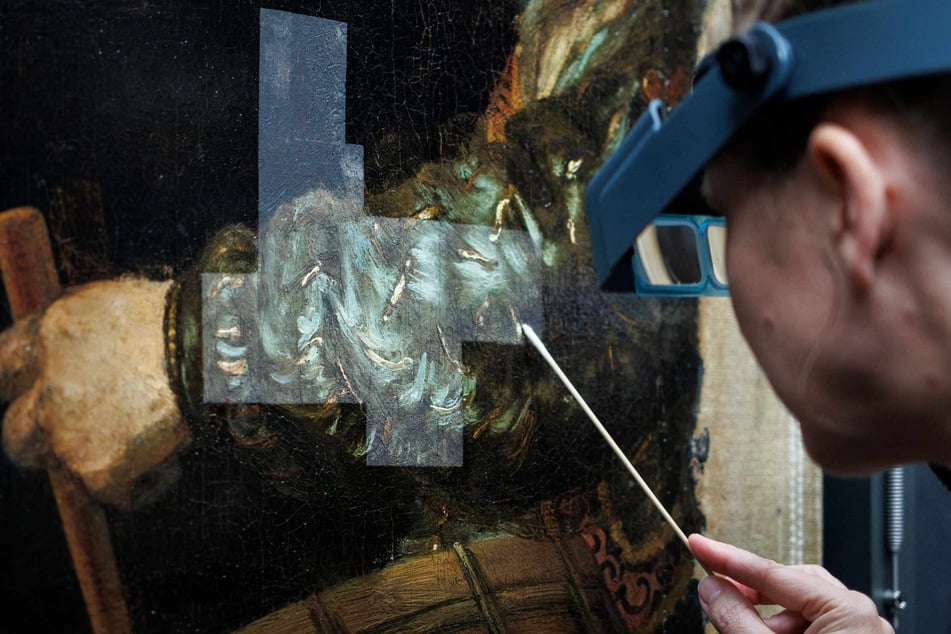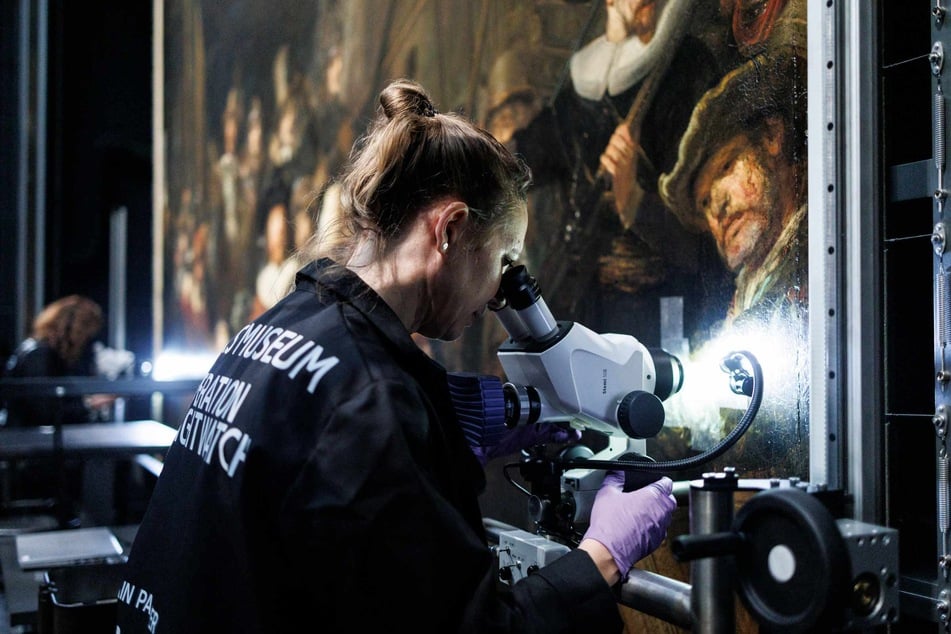Operation Night Watch: Rembrandt classic gets makeover
Amsterdam, Netherlands - Shielded from the public by glass panels and staring intently through microscopes, a team of specialists has started work restoring Rembrandt's The Night Watch, one of the most iconic paintings of the Dutch Golden Age.

Eight art conservators are painstakingly removing multiple layers of varnish from Rembrandt's masterpiece depicting Amsterdam's civil guard on patrol.
"Operation Night Watch," as their work has been called, is so difficult that they do not know when it will end at Amsterdam's Rijksmuseum.
The varnish was applied to the 3.62 meters x 4.37 meters work – painted in 1642 – as past restorers sought to preserve its beauty as well as fix it after attacks by vandals.
The last varnish was applied in 1975 after a man slashed the painting 12 times with a dinner knife, in 1981, and then in 1990 after it was attacked with acid.
"We monitored The Night Watch for years and we saw that over the past few years, the varnish had yellowed and also become at some points less transparent," Rijksmuseum director Taco Dibbits said.
"Former restoration projects happened very, quickly, very fast," Dibbits told AFP.
Operation Night Watch seeks to remove the varnish and expose the original paint before a new specialized varnish is applied to restore the painting "as close as possible to its former glory."
What is the restoration process like for Operation Night Watch?

Inside an enclosed area, but in full view of curious visitors, Anna Krekeler carefully applied a tiny piece of highly absorbent tissue to a part of the painting depicting the sleeve of a militia drummer.
In a delicate operation that takes barely a minute, she applied the tissue, laced with solvent, to the painting, before covering it with a flexible plastic square.
"When we remove it, all the varnish is absorbed into the tissue and comes off," fellow conservator Esther van Duijn explained.
The restorers then use a cotton swab to remove the remaining varnish residue that may be left on the painting's delicate surface.
"I think the most exciting and perhaps the scariest bit is that the people are watching over our shoulders, but once you are working you tend to forget that," laughed Van Duijn.
Added Dibbits, "During this process, the public can come and see something that's very exciting and very exceptional."
"You will be able to see the Night Watch, in a sense, naked, without make-up, and that's what I think is so amazing in this period to see."
What are the next steps in the Night Watch restoration?

Outside the room, curious visitors film and intently discuss the process.
Removing old varnish from The Night Watch's surface is the third stage in a research and conservation project that started five years ago.
It will leave the masterpiece appearing much greyer, but it would be "temporary" the conservators said.
The next stage will be the new varnish, retouching the old damage, and then finally a new frame.
"Hopefully then it will look almost as good as it did in its former glory," said Van Duijn.
Rijksmuseum director Dibbits said it was not possible to say when Operation Night Watch will finish.
"The painting itself decides how long it will take, what the pace will be," he said.
Cover photo: SIMON WOHLFAHRT / AFP